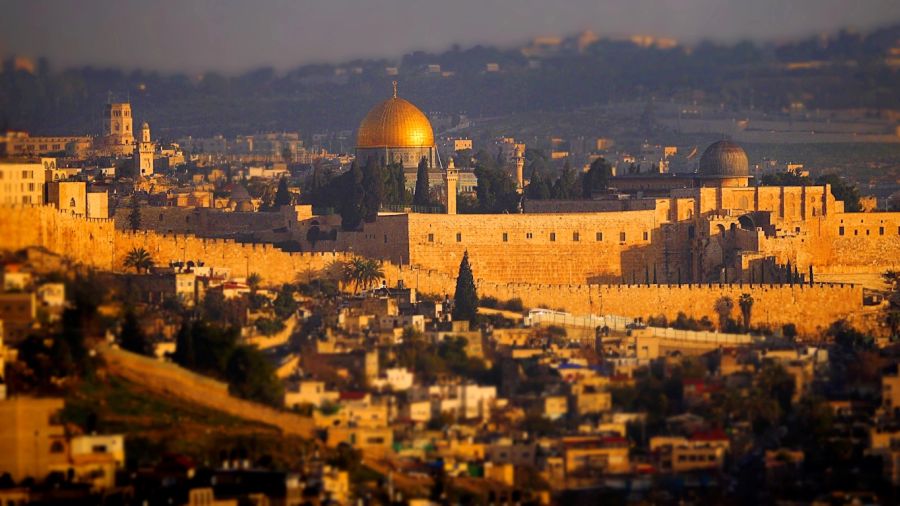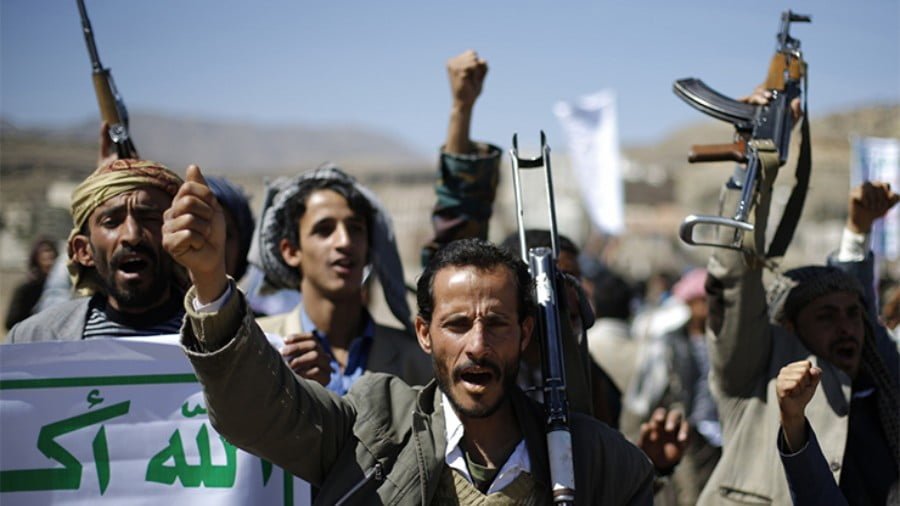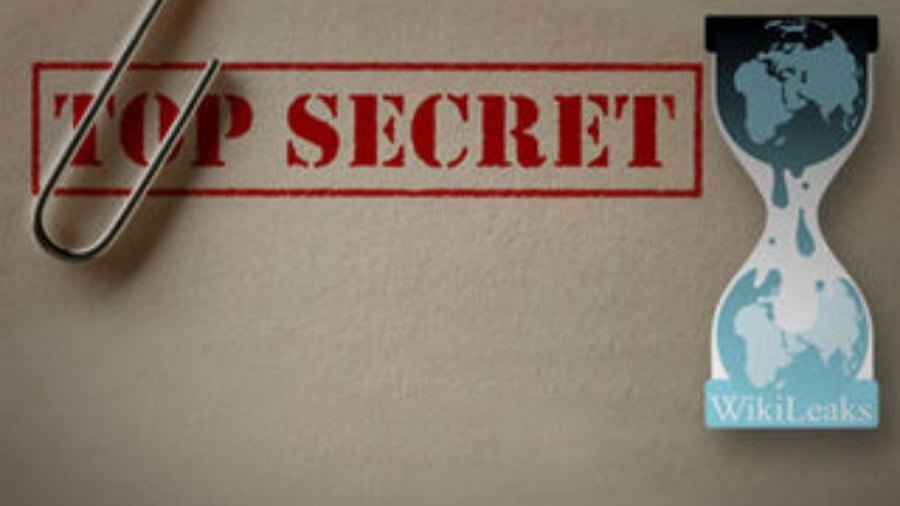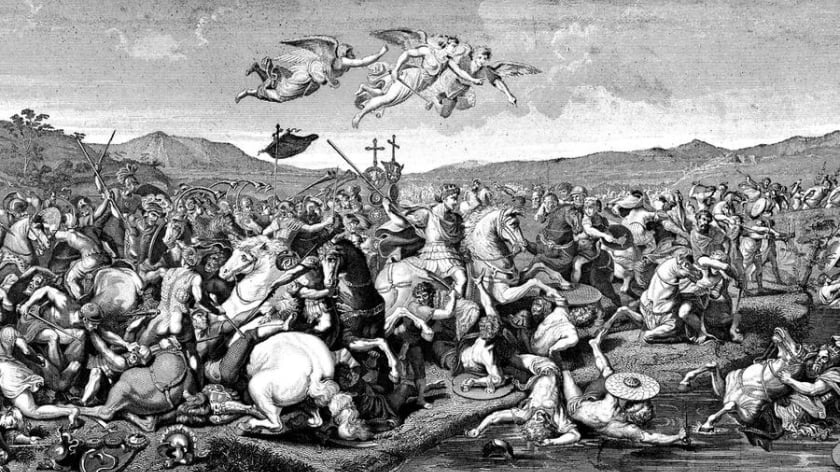Zionism’s Anthem: The Danger Lurking in “Jerusalem of Gold”
The risk of Israel destroying the Al-Aqsa Mosque and the Dome of the Rock and replacing them with a so-called Jewish temple is real and present. Building a temple in place of the mosque and golden dome that grace Jerusalem today has been a long-time Zionist aspiration, expressed in songs, tales, and, over the last decade, provocations that could lead to the spark Zionists need to raze the Haram Al-Sharif.
One example of Zionist propaganda that lays claim to the Haram Al-Sharf is the iconic Hebrew song “Jerusalem of Gold.” Written by the Israeli national poet Neomi Shemer, it is often presented as a simple song that expresses the yearning of the Jewish people for their lost, historical capital. However, it isn’t hard to see that the song, its writer, and the people who commissioned the song had a very clear political agenda.
The song begins with the following lines:
Mountain air as clear as wine
And the fragrance of pines
Is carried in the evening wind
With the sound of ringing bells
And in the slumber of tree and stone
Trapped in its dream
The city that sits alone
And in its heart a Wall
Jerusalem of gold
And bronze and light
To all your songs
I am a violin…
The image of Jerusalem as a lone city sitting alone and secluded, a haunted city with nothing but a past, reflects a romanticized idea that protestant evangelicals and dreamy Zionists share, but it is not a true reflection of the Jerusalem of 1967. The song goes on with the following lines:
How the water wells dried up
The city square is empty
And no one ascends to the Temple Mount
In The Old City
And not a soul goes down the Dead Sea
By way of Jericho.
The city of Jerusalem was divided in 1948 between the newly formed states of Jordan and Israel, and both sides were populated. The Western side was subjected to an ethnic cleansing campaign that emptied it of its indigenous Palestinian population and settled by Zionist immigrants making it an Israeli-Jewish-only city. The Eastern side of Jerusalem, including the Old City, remained in Arab hands and came under Jordanian rule.
The markets in the Old City were filled with people; worshipers on the Haram Al-Sharif (The Temple Mount) prayed; and the water wells were not dried up. Only for Neomi Shemer, who at the time was Israel’s national poet and songwriter, East Jerusalem — and especially the Old City — was empty because, as she put it, “a world without Jews is empty.”
Reading the lines of her song one could almost forget that the Old City of Jerusalem, to which Neomi Shemer was referring, was in fact an Arab and predominantly Muslim city for over 1,500 years. The city also included, among several other minorities, a small, impoverished community of Jews.
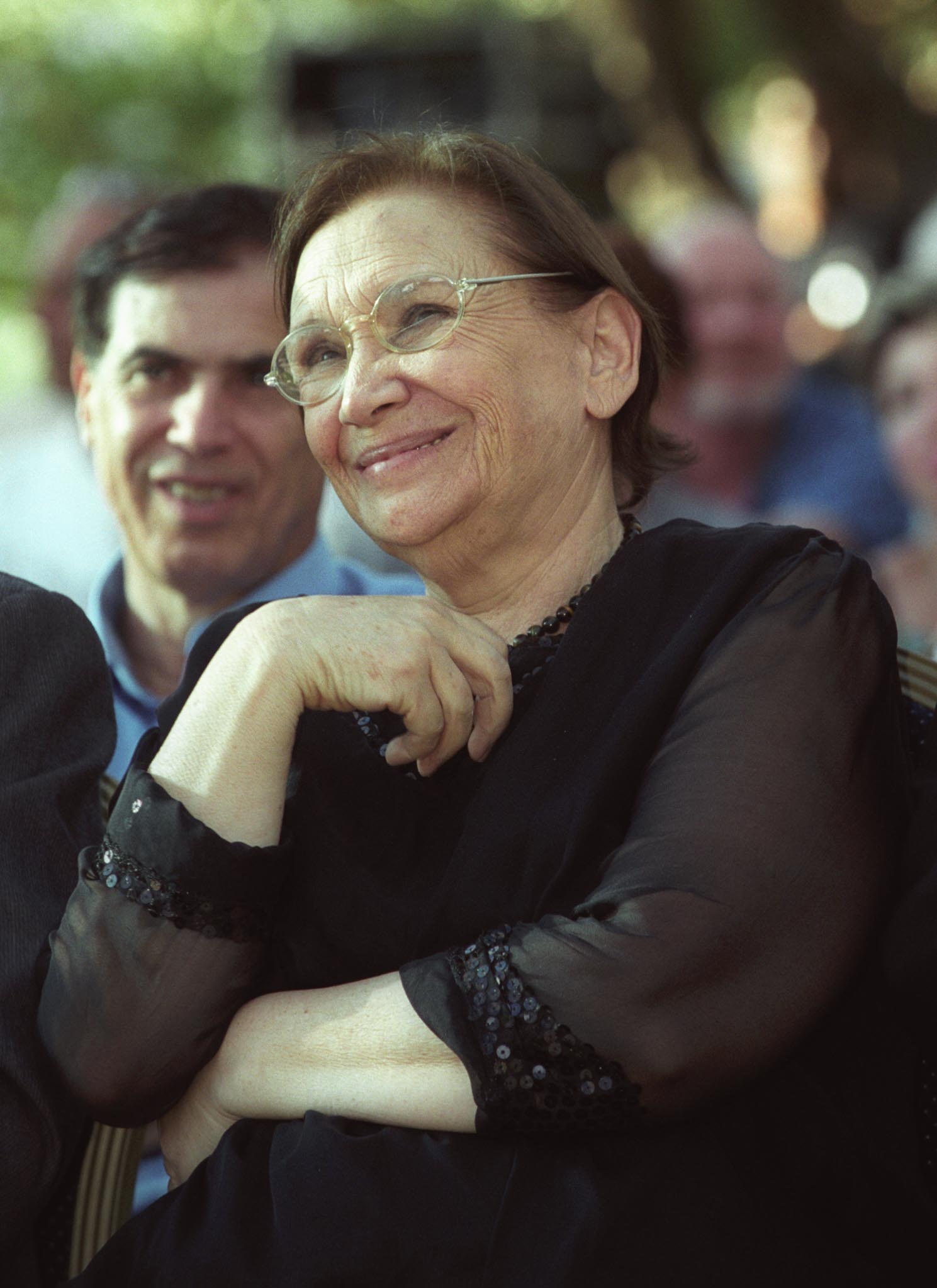
A family connection
To add a disclaimer, I must confess that Neomi Shemer was a close friend of my family. Her mother, Rivka Sapir, and my grandmother Sarah both came to Palestine as young Zionist pioneers in the early part of the twentieth century. Even though they settled in different parts of the country — Rivka in the northern settlement of “Kvutzat Kinneret,” a settlement on the banks of Lake Tabariya, and my grandmother Sarah in Jerusalem — they remained the closest of friends for over fifty years. Neomi Shemer and my father were friends growing up, though my father was her senior in age, and the two families were close for decades.
Neomi Shemer admittedly had a deep admiration for the young Zionist men of that generation — men who, like my father, had dedicated their lives to the military arm of the Zionist colonial project, and in fact created the military machine known as the Israeli Army, or IDF.
Determined to “complete the job”
By the 1960s, my father and his generation of officers were all generals and had become the subject of enormous national admiration within the young Zionist state. Their intention — indeed their ambition to “complete” the conquests of 1948 by taking the West Bank and East Jerusalem — was not a secret. Neomi Shemer, like so many other Israelis, shared that ambition, which was an Israel that stretches from the Jordan River to the Mediterranean Sea.
It wasn’t until May of 1967 that the opportunity arrived to realize the ambition to take the rest of Palestine. Israeli intelligence made it clear that the Arab armies were no match for the Israeli Defense Forces and, with this knowledge, they began to campaign to get popular support to complete their ambition of conquest.
A brilliant campaign
The campaign had several parts. One had to do with perpetuating the lie that the Arab armies were poised to attack and that the “Jewish State” was under an existential threat. This argument was used to pressure the Israeli government, which was at that time hesitant about initiating yet another war, to give the green light to start a preemptive strike.
The other front was more visionary and included the song “Yerushalayim Shel Zahav,” or “Jerusalem of Gold.” Only Neomi Shemer could have written this song. She knew how to play on the chords of national sentiments more than any other songwriter, and indeed she was tasked with the job. The mayor of Jerusalem at the time was the ambitious Teddy Kolek, who no doubt could already taste having the magnificent Old City of Jerusalem under his control. He had the song commissioned just weeks before the war.
With her background, her ability to romanticize Zionism and the achievements of Zionism, and her deep and personal connections to the generals of the IDF, who were chomping at the bit to start a war, Neomi Shemer was sure to deliver the goods. And indeed she did.
Israel’s nineteenth Independence Day was held on the 9th of May that year. The military parade customary on Independence Day was a more modest version, as the military was already preparing for war. The song “Jerusalem of Gold” was performed for the first time by Shuli Natan, a young female singer who was until that moment unknown and was personally chosen by Shemer. It was an astounding success and, overnight, the song was heard throughout the entire country.
The Temple Mount
On June 4, after two stormy meetings between the IDF top brass and Prime Minister Levi Eshkol, the green light was given to conduct a preemptive strike against Egypt. The mandate from the government was to attack Egypt only. However, there is evidence indicating that the popularity of the song had given impetus to the popular demand for Israel to take the Old City of Jerusalem. This meant opening the war to an eastern front and taking the entire West Bank from Jordan. The generals were only too happy to do this, and indeed they did it without waiting for government approval.
The conquest of the Old City was made all the more dramatic as the song had become popular to the point that it was being constantly played on Israeli radio and in every home. I myself remember the song playing before and during the war, as my father spent days and nights at IDF headquarters and my older brother, a young officer at the time, on the Egyptian front. Then came the famous announcement by Colonel Mordechai Gur, commander of the IDF paratrooper Brigade who took the Old City:
I am not a religious man, but I am touching the stones of the Kotel (the Western Wall), I am touching the stones of the Kotel with my bare hands!”
Later on, Colonel Gur called out what became the most iconic statement of the war: “Har Habayit Beydeynu!” or “The Temple Mount is in our hands!”
Immediately after the war, and once the eastern part of Jerusalem including the Old City was conquered by the Israeli army, Neomi Shemer went on tour to perform in front of the victorious troops who were still at the front. At that point she added the following lines to the song:
We have returned to the Water Wells
To the Market and the City Square
A Shofar calls on the Temple Mount
In The Old City
And once again we will go down to the Dead Sea
By way of Jericho.
Neomi Shemer performing her most famous song, “Yerushalayim Shel Zahav.”
Criticism
After the war there was some criticism of the song for its implication that there were no people in the Old City before Israel had occupied it. However, just as the Zionists did not see the Palestinains as people in 1948, Nemoni Shemer did not see them in 1967. In an interview she gave in response to the criticism, she said, “People criticize me because I say that no one was there when it was full of Arabs,” and then she added, “This made me extremely angry. For me a place without Jews is empty.”
A national symbol
It is said that when a conflict is political it is solvable, but if it becomes religious then it is far more dangerous because each side believes that God is on their side. In the case of Jerusalem, and especially the Haram Al-Sharif, the opposite is true. Zionists have been able to create a yearning among non-religious Israelis to see a “Jewish” temple built in place of the glorious Al-Aqsa Mosque and the Dome of the Rock, as a national aspiration.
It is as though Israel will not be complete until such a temple — the temple of King David — once again sits there instead of the Al-Aqsa Mosque. As I look back at my own childhood, I can recall countless folk songs in which the building of the temple is mentioned and repeated as a yearning, as a national aspiration of all Jews, religious and non-religious, including ones like myself who were raised completely secular.
Quiet can be a dangerous thing
In a video in Hebrew that came out in 2019, one of Israel’s beloved national public figures, Yehoram Ga’on, who made a career as a singer and actor, speaks to this yearning. He speaks about the “injustice” of denying Jewish people access to the Temple Mount, “the holiest place for the Jews.” In this video, he refers specifically to the fact that on “Jerusalem Day” that year the Temple Mount will be closed to Jewish people because it fell on the last day of the Muslim holy month of Ramadan.
Ga’on says that the government — or the “kingdom,” as he refers to it — prefers “quiet” over allowing Jewish people to access what is rightfully theirs. “This is a knockout victory [of] the Islamic calendar over the Jewish calendar,” he says, meaning that, because the dates of their holiday collided with ours, we capitulated for the sake of “quiet.” He explained:
The kingdom does not want to mobilize the army, police and border police to face off crowds who call out ‘With blood and spirit we will free Palestine,’ because the kingdom wants quiet.
All we asked is that we too are allowed to enter the Mount — is that too much to ask?”
Ga’on then went on to say that this desire for quiet means that the Jews have to give in and to forgo their own rights, their beliefs, their existence, and that this is a desecration of the memory of those who gave their lives in battle. The video is peppered with clips of Palestinian “violence,” which contradicts the presumption of “quiet,” and proposes that, even with this egregious injustice to the Jews, Israel does not have the quiet it desires because the Arabs are violently demanding more and more.
The innocence of his proposition could make one believe that indeed Jewish Israelis were the ones living under occupation; that Jewish Israelis are denied rights; that they are the ones who are struggling to survive in an oppressive, apartheid regime that wants to get rid of them. Listening to his reasoning — his quiet, reasonable voice — one could almost be convinced that a terrible wrong has been done to the Jews in Jerusalem.
The ability to exclude the context from every argument is a tactic that Zionist propagandists have used for many decades. They gloss over almost an entire century of ethnic cleansing, violence, racist policies, an apartheid regime, and a concerted effort to rid Palestine of its people and its landmarks.
Fifteen hundred years of history, fifteen hundred years of worship, and maintaining what is one of the most wonderful structures known to humanity are meaningless in the eyes of Zionists. As an example, Al-Aqsa and the structures that surround it are older and in many ways more beautiful and certainly more significant than the Taj Mahal. Now imagine someone coming to claim that the Taj Mahal is sitting on an ancient temple and must be destroyed.
Whether it is Neomi Shemer or Yehoram Ga’on, both of whom are Zionist cultural icons, the message is the same: Only Jews matter. As we look at the short history of Israel, we can see clearly that the role of Zionist zealots was always instrumental in achieving Zionist goals. If it weren’t for zealots, fanatic Zionist settlers, there would be no Zionist state, no settlements in the West Bank, and no State of Israel. The Zionist movement was always a step ahead, indoctrinating, supporting, and funding the zealot settlers who then took things into their own hands and created facts on the ground.
Should the Al-Aqsa Mosque be destroyed, the match will be lit by a fanatic settler, but it is decades of Zionist indoctrination and Israeli policies that will be responsible for the destruction. And all that will be left for the rest of the world to do is look at the ashes in shame.
Feature photo | Dome of the Rock at dawn. Photo | Joiseyshowaa | Flickr CC

